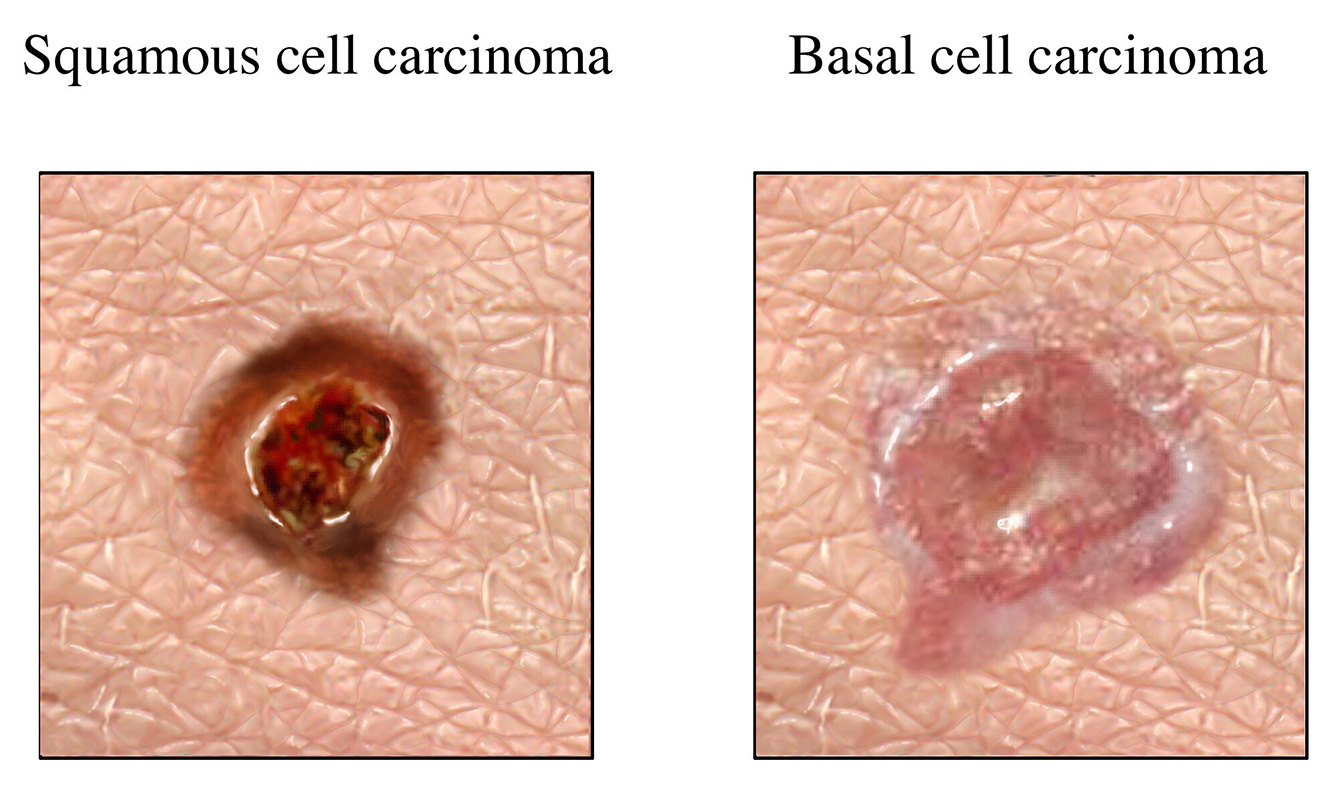Squamous Cell Carcinoma Facts
Squamous cells are the flat cells that form the top layer of the epidermis, which is the outer layer of your skin. Squamous cell carcinoma is skin cancer of the squamous cells; it develops when squamous cells grow uncontrollably. Although, it's not typically life-threatening, early detection of squamous cell carcinoma is critical since it can spread to other parts of your body.

The main cause of squamous cell carcinoma is exposure to ultraviolet rays in natural sunlight, tanning beds and sun lamps.
As a result, squamous cell carcinoma typically affects sun-exposed areas of your skin, like on your scalp, ears, lips or the backs of your hand. It can also develop anywhere there are squamous cells, like your genitals or the mucus membranes in your mouth.

Squamous cell carcinoma appears as growths that feel bumpy, bleed and crust over or that are raised with a depression in the center. Another warning sign is a sore or scab that hasn’t healed or gone away after two months.
Other symptoms may include:
- Red or bleeding scaly patches
- Wart-like growths with crusted surfaces
- Hard, waxy skin lumps with visible blood cells
- A newly itchy, tender or painful sore
- Nonhealing, bleeding or crusting open sores
- Pinkish patches with shiny, pearly-white raised edges
If you notice any of these skin changes, contact your doctor.
The stages of skin cancer are defined by the structures that are involved:
- T-stage describes how deeply the tumor has invaded the skin and nearby tissues.
- N-stage is the tumor’s involvement in nearby lymph nodes.
- M-stage describes whether or not the cancer cells have spread to distant organs.
Squamous cell carcinoma is less likely than other skin cancers to spread to your lymph nodes and distant organs.
The main risk factor for developing squamous cell carcinoma is exposure to ultraviolet radiation from:
- Natural sunlight
- Tanning beds
- Sun lamps
Other factors that may contribute to developing squamous cell carcinoma include:
- Having actinic or solar keratosis
- Being a blond or redhead
- Having fair skin that easily freckles or sunburns
- Having light-colored, blue or green eyes
- Having many, or unusual, moles
- Older age
- Smoking or using tobacco
- Being infected with HPV (human papillomavirus)
- Family or personal history of skin cancer, like Bowen's disease
- Having a weakened immune system
- Having a history of severe, blistering sunburns
- Previously having radiation therapy or exposure to radiation
- Having a rare inherited condition called xeroderma pigmentosum
People with darker complexions generally have a much lower risk of skin cancer, but squamous cell carcinoma is the most common type of skin cancer for African Americans.

Ultraviolet damage is cumulative, meaning it begins building up in your childhood, so prevention should start at a young age. The best ways to lower your risk for skin cancer include shielding the skin as much as possible from UV radiation:
- Use sunscreen and reapply at least every two hours
- Wear protective clothing, including fabrics not easily penetrated by UV light
- Wear other protective items such as hats and sunglasses
- Stay in the shade during peak hours when the sun’s UV rays are most intense (from 10 a.m. to 4 p.m.)
- Avoid tanning salons